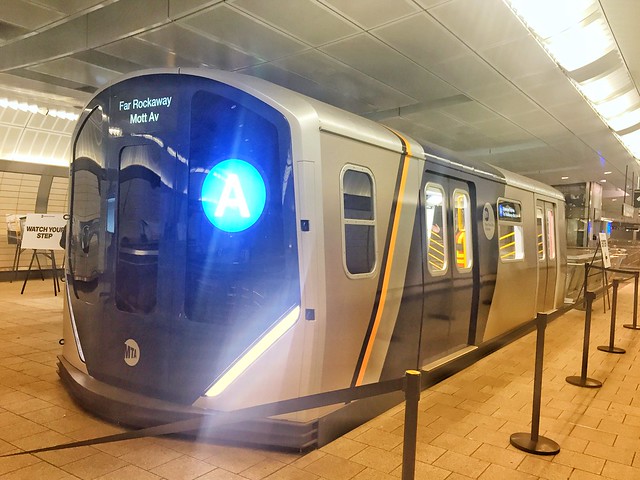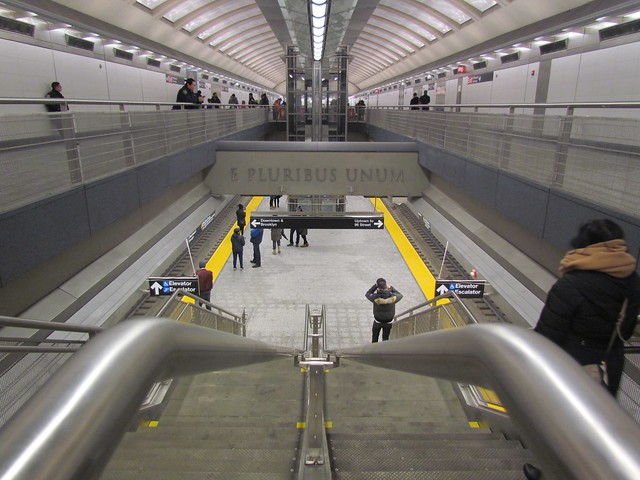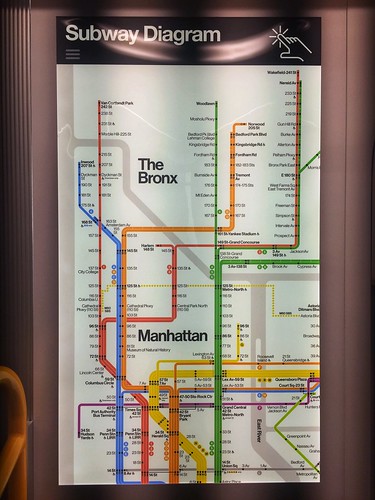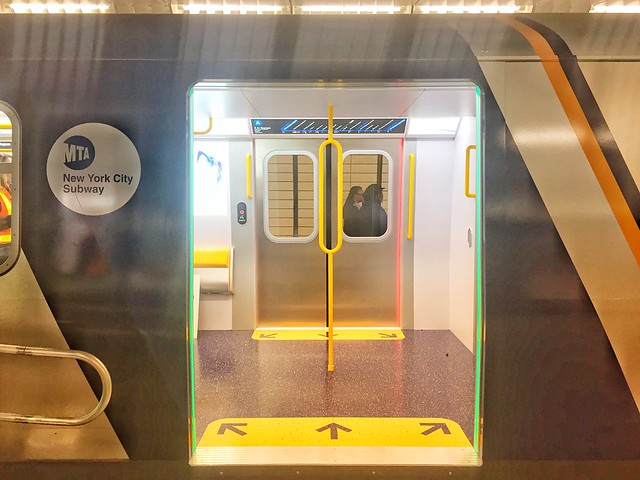
Which genius came up with the idea of awarding this plan money?
With any luck, this week will be the last we hear of the MTA’s ill-conceived “Genius Competition.” The brain-child of Gov. Andrew Cuomo, the Genius Competition arose in May of 2017 when the governor couldn’t ignore the drumbeat over declining subway reliability and decided to convene a panel hold a contest to fix every problem. It wasn’t well received within the MTA as the agency’s staff members who work hard to keep the subways running felt they were being ignored in favor of the glitz and glamour of a blue-ribbon panel, and the resentment has festered within the walls of 2 Broadway for months, another sign of the disconnect between Cuomo’s people and the MTA careerists.
The Genius Competition has taken up time and money, and a lot of the oxygen in the room, as Cuomo has tried to bill it as the thing that will prove people are thinking hard about how to fix the MTA. On Friday, the winners were revealed. The agency doled out around $2.5 million to eight ideas. Some of them — an ultra wideband wireless system for signal technology, for instance — the MTA had already been exploring. Others — a light-weight carbon fiber-based modular subway car designed by CRRC — should be part of the MTA’s ongoing improvement efforts. I’m not going to detail all eight of the winning ideas; you can read the press release or watch the videos detailing the winners. I’ve embedded the CRRC video below as it has some alluring future-tech rail car renderings.
But I want to talk about one in particular that won $330,000: Lawyer and transit enthusiast Craig Avedisian proposed, as the MTA put it, “changing passenger loading procedures and adding more cars to trains to increase capacity.” On its surface, that seems like a reasonable idea until you realize that all but a handful of G train stations aren’t long enough for longer cars. On closer examination, Avedisian is proposing an extremely customer unfriendly idea that would involve a third of his longer subway trains not platforming at every other station. And this idea won money from an MTA panel that includes the agency’s current chairman, president, managing director and chief development officer. If you’re asking if anyone is home, well, it’s a good question.
Avedisian wrote a 20-page application in support of his idea. Drawing the wrong sort of inspiration from London, Avedisian proposes adding 3-4 cars to every subway train so that more passengers can fit on one train, but only some cars will open their doors at a station. He has designed an A-B system where cars 1-10 will open their doors at A stations and cars 5-14 will open their doors at B stations. He claims this will increase capacity by up to 65% at a cost of $12 billion, far less than subway expansion efforts. (This of course ignores that subway “expansion,” by definition, reaches new areas underserved by transit, but Avedisian’s proposal doesn’t seem to reach this level of consideration.) The conclusion of his argument is “How can the MTA not do this for New York?”
There are of course numerous reasons why the comparisons to London fall flat and why this idea should be a non-starter. For a rapid transit system, it is an idea very hostile to riders who would need to know a lot of details about their rides that most people shouldn’t be expected to know, and without articulated trains, it can lead to a situation where riders are “trapped” when they end up in cars that don’t platform at their destination. In practice, as we can see with Amtrak and other commuter rail services, including those serving London, it increases dwell times to levels unsustainable for a rapid transit network. On a technical level, the plan ignores the costs associated with procuring enough cars for every train to be 40 percent longer or with adjusting the length of MTA signal blocks to accommodate longer trains. It’s an excuse for avoiding addressing the real capacity increase: a modern signal system.
Ultimately, Avedisian beat the MTA and its own game. He came up with an idea that shouldn’t be contemplated in a forward-thinking transit environment and bilked the MTA out of a few hundred grand. But the MTA seems to be taking this whole thing seriously. “People from around the world delivered groundbreaking solutions that truly represent a new wave of innovation for the MTA, and we are more excited than ever about the future of New York Subways,” MTA Chairman Joe Lhota said of the entire slate of Genius Competition entries. And officially, the MTA is going to consider this proposal, though it sounds as though the G train will be the one and only subway line to get longer cars. The press release states:
The MTA will evaluate the system’s busiest subway lines, stations where platforms are long enough to accommodate longer trains, and fleet and yard availability, to further explore applications of Avedisian’s idea. Some subway lines are viable candidates for a pilot program due to ridership demand and their station layouts. A study of fleet and infrastructure availability will be needed for a future pilot program or future car procurement.
But why it chosen as a finalist by a panel that included the top MTA leadership officials? In comments to press, Avedisian drew further faulty comparisons. “I think it’s, in concept, no different than local/express, J/Z,” he said to The Daily News. Of course, it’s not the same as an express/local situation in which riders know that every car will platform. It’s a confusing excuse for a solution to problems that can be solved — and that seems to be a metaphor for the Genius Competition writ large.
After 10 months, the MTA is a few million dollars poorer and a real solution to the transit crisis remains a far-off spot on the horizon. The Genius Competition seemed like a distraction last year and ended as one this year. The good ideas, as told through hundreds of submissions, should be embraced without the pomp and circumstance of a contest; that is, after all, what a well-run agency would do to usher in its future. But at least Robert James, one of the “winners” for this ultra-broadband idea, can use $250,000 of MTA money to, as he told Dan Rivoli, build his home in Tampa, and isn’t that everyone’s dream?




 One of the strange twists and turns of the ongoing saga over Governor Andrew Cuomo’s responsibility for the current collapse of NYC’s subway system involved a breakfast and some finger pointing at Con Edison this past summer. While I was on vacation (and subsequently recovering from a broken bone I sustained while on that vacation), this story of odd finger-pointing unfolded to a certain denouement that had Con Edison paying for some costs regarding power delivery to the MTA. It seemed strange at the time and raised eyebrows within the New York political landscape, and after a report this weekend in The Daily News, it seems that the MTA may have fudged some numbers to allow the governor to blame, and get money from, Con Edison for unrelated (or at best, quasi-related) subway performance issues.
One of the strange twists and turns of the ongoing saga over Governor Andrew Cuomo’s responsibility for the current collapse of NYC’s subway system involved a breakfast and some finger pointing at Con Edison this past summer. While I was on vacation (and subsequently recovering from a broken bone I sustained while on that vacation), this story of odd finger-pointing unfolded to a certain denouement that had Con Edison paying for some costs regarding power delivery to the MTA. It seemed strange at the time and raised eyebrows within the New York political landscape, and after a report this weekend in The Daily News, it seems that the MTA may have fudged some numbers to allow the governor to blame, and get money from, Con Edison for unrelated (or at best, quasi-related) subway performance issues. 





